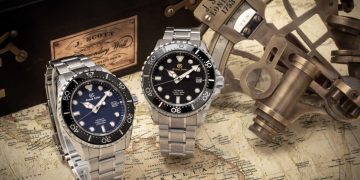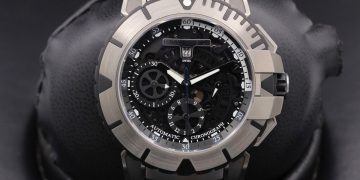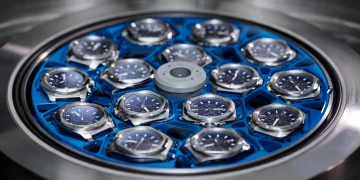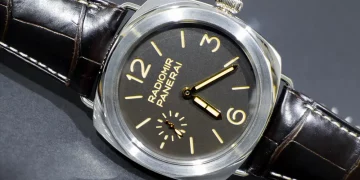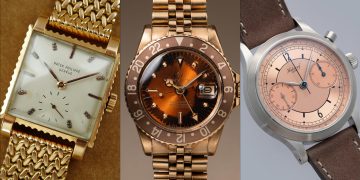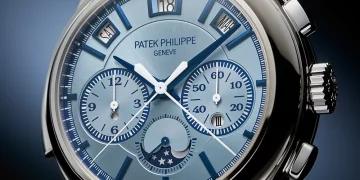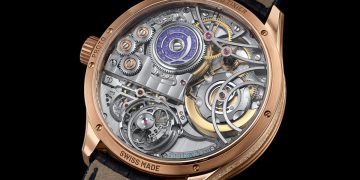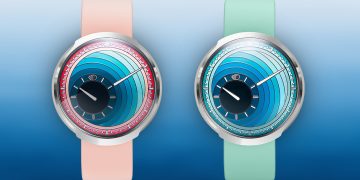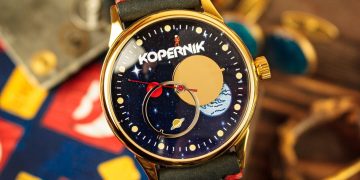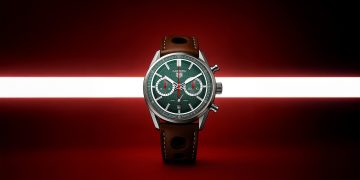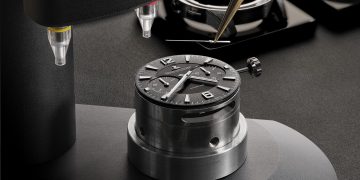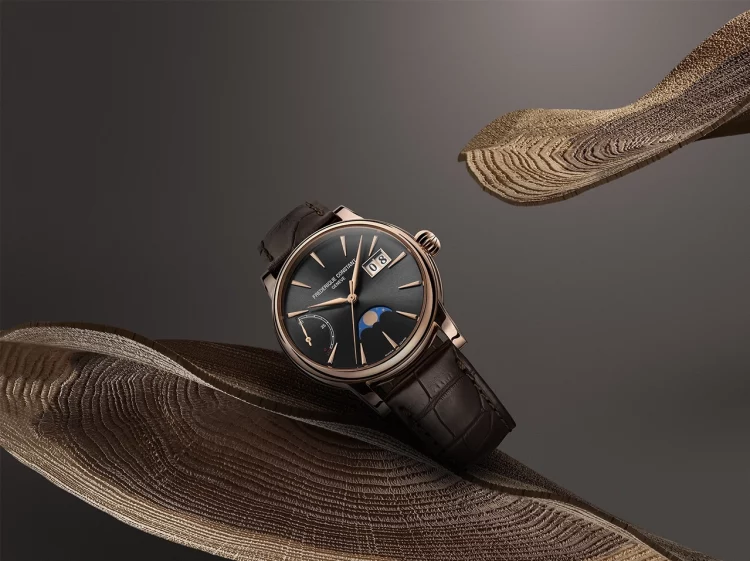In the world of luxury watchmaking, exclusivity, precision, and cutting-edge technology often intersect. Watchmakers are constantly pushing the boundaries of what is possible, crafting timepieces that not only tell time but also embody the very essence of engineering, art, and innovation. While most mechanical watches are powered by springs, automatic movements, or quartz, there exists a rare breed of timepieces that defy conventional watchmaking methods. One such example is the $5 million atmospheric-powered watch, an extraordinary feat of engineering that runs on air.
But how does such a watch even work? The concept of a timepiece that requires no winding, no battery, and no conventional power source may seem too far-fetched to some, but it is very real. This article will take a deep dive into these ultra-exclusive, atmospheric-powered timepieces, exploring the principles behind their operation, the science that powers them, and the story of the exceptional craftsmanship that goes into creating them.
The Concept of Atmospheric Power: A Revolutionary Idea
The idea of using the atmosphere to power a mechanical movement is not as far-fetched as it might sound. Atmospheric pressure, the weight of the air surrounding us, is a constant and renewable source of energy. While this concept has been explored in various forms throughout history, it has only been in recent years that watchmakers have successfully harnessed it in a functional, reliable, and commercially viable timepiece.
Atmospheric-powered watches rely on the principles of air pressure to generate power. One of the key breakthroughs in the development of these watches is the integration of a mechanical movement that can convert the force of air into rotational energy. This energy is then used to power the watch’s movement, eliminating the need for conventional power sources like batteries or manual winding.
In essence, the air around us becomes the “fuel” that drives the watch’s intricate mechanisms, offering an elegant solution to the age-old problem of powering mechanical watches. However, the engineering behind such watches is incredibly complex, and the ability to design a movement that can reliably run on air for years is no small feat.
The Engineering Behind Atmospheric-Powered Timepieces
To understand how an atmospheric-powered watch works, it is important to first grasp the principles behind mechanical movements. Traditional mechanical watches rely on a spring-driven mechanism, where a wound mainspring stores energy and releases it gradually to power the watch’s hands. The movement of the watch is controlled by gears, levers, and escapements that regulate the release of energy, ensuring that time is measured with precision.
In contrast, an atmospheric-powered watch operates on a very different principle: atmospheric pressure. At the heart of these timepieces is an innovative mechanism known as an “air-powered oscillator.” This oscillator uses the constant movement of the surrounding air to generate energy. Essentially, the air pressure interacts with the oscillator’s components, causing them to move and transfer kinetic energy into the watch’s movement.
This unique oscillator is often designed in such a way that it mimics the action of a traditional escapement, controlling the release of energy to regulate the timekeeping. While most watches rely on an intricate system of gears and springs, the air-powered oscillator eliminates the need for these traditional components, relying solely on the flow of air.
The $5 Million Price Tag: What Makes These Watches So Expensive?
When we talk about a $5 million watch, the price tag alone demands attention. But what makes an atmospheric-powered timepiece worth such an astronomical sum? The answer lies in the exclusivity and craftsmanship involved in creating these rare and complex timepieces.
First and foremost, the engineering behind an atmospheric-powered watch is incredibly advanced, requiring the expertise of highly skilled watchmakers, engineers, and designers. The development of the air-powered oscillator alone represents a significant leap in watchmaking technology, and the integration of this mechanism into a fully functional timepiece requires meticulous precision and attention to detail.
Moreover, the materials used in these watches are often of the highest quality. From rare metals and advanced alloys to intricate hand-finishing and decorative elements, every aspect of an atmospheric-powered timepiece is crafted to perfection. The watch’s case is typically made from materials such as platinum, titanium, or 18k gold, while the dial and movement are often adorned with complex, hand-engraved designs or gemstone inlays.
Another factor contributing to the high price of these timepieces is their exclusivity. Only a limited number of atmospheric-powered watches are produced each year, making them highly sought after by collectors and enthusiasts. The rarity of these watches adds to their prestige and desirability, further driving up their value.
Finally, the watch’s ability to run on air is not just a gimmick—it represents a cutting-edge achievement in watchmaking, one that will likely stand the test of time. As such, these watches are not just timepieces; they are works of art and engineering masterpieces that embody the pinnacle of horological innovation.
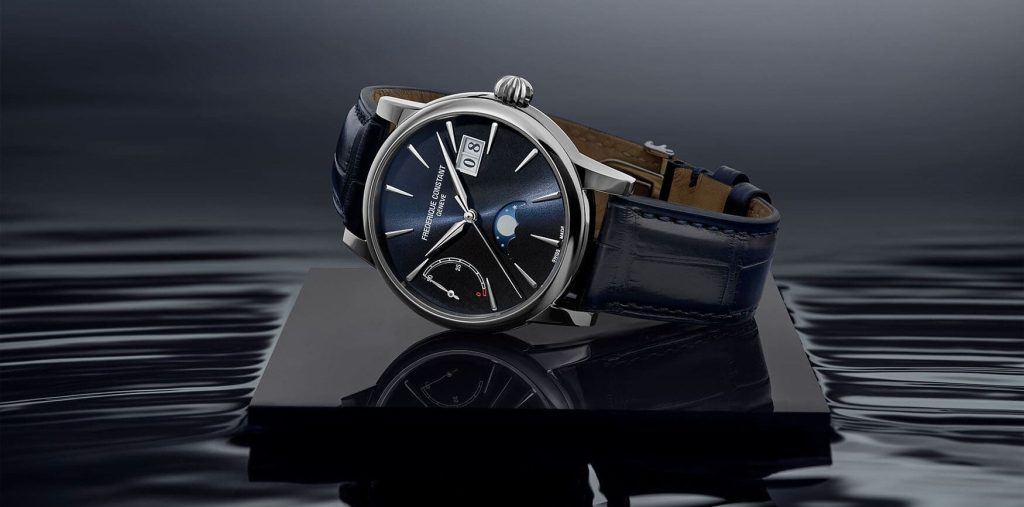
How Does the Air-Powered Oscillator Work?
The air-powered oscillator, the heart of an atmospheric-powered timepiece, is an intricate and delicate component that relies on a combination of aerodynamic principles and mechanical ingenuity. The basic concept is relatively simple: as the watch is worn or exposed to changes in air pressure, the movement of the surrounding air interacts with the oscillator, causing it to oscillate and generate energy.
While the basic idea may sound straightforward, the technology required to make this system functional and reliable is far more complex. The air-powered oscillator must be incredibly precise in its movements, as even the slightest variation in air pressure or motion could affect the accuracy of the watch. Furthermore, the system must be designed in such a way that it can store and release energy efficiently without compromising the integrity of the movement.
To achieve this, the air-powered oscillator is often housed in a specially designed chamber that helps control the flow of air and maintain consistent pressure. The oscillator itself consists of a series of rotors, vanes, or other aerodynamic components that are capable of harnessing the energy from the surrounding air and converting it into rotational energy. This rotational energy is then used to power the movement, just as a traditional mainspring would.
The precision and reliability of the air-powered oscillator are critical, and only a few watchmakers have been able to master the technology required to create a functional atmospheric-powered movement. The result is a timepiece that is not only an engineering marvel but also an incredible achievement in the world of horology.
Why Are These Watches So Rare?
Atmospheric-powered watches are rare for a variety of reasons. First, the technology itself is incredibly difficult to master. Designing and producing an air-powered oscillator that works reliably over the long term is no small feat. The complexity of integrating this mechanism into a fully functional timepiece requires the expertise of the best engineers and watchmakers in the world.
Additionally, the cost of materials and craftsmanship involved in creating these watches contributes to their rarity. Only a few companies are capable of producing watches with the level of precision and sophistication required for atmospheric power. As a result, these watches are often produced in extremely limited numbers, making them highly collectible and highly exclusive.
Finally, the demand for these watches is relatively niche. While there is certainly a market for ultra-exclusive timepieces, only a small number of watch enthusiasts and collectors are willing and able to invest in a $5 million watch. This limited demand, combined with the rarity of the watches themselves, ensures that they remain out of reach for most watch buyers.
The Future of Atmospheric-Powered Watches
The introduction of atmospheric-powered watches represents a significant leap forward in the world of horology. While they may remain a niche product, the technology behind these timepieces could have far-reaching implications for the future of watchmaking.
As materials science and engineering continue to evolve, it is possible that atmospheric-powered movements could become more widespread. However, the complexities of harnessing air pressure to power a watch are still very much in their infancy. It may take years, if not decades, before we see a true revolution in atmospheric-powered watches that can be mass-produced at a more affordable price.
For now, however, the $5 million air-powered timepiece stands as a symbol of the incredible possibilities of modern watchmaking. It represents the very best in luxury, engineering, and craftsmanship, pushing the boundaries of what is possible in the world of horology.


